In Which Tissue System Of Plants Would You Expect To Find The Guard Cells?
The below mentioned commodity provides an overview on the epidermal tissue system of plants.
Epidermis:
This system solely consists of the outermost skin or epidermis of all the found organs beginning from the underground roots to the fruits and seeds.
This layer represents the indicate of contact betwixt the plants and the outer environment and, equally such exhibits diversities in structure.
It is primarily a protective tissue, which protects the internal tissues against excessive loss of h2o past transpiration and mechanical injury. Subsidiary functions like storage of h2o, glue, secretion and, though rarely, fifty-fifty photosynthesis, may also be carried on.
But for stomatal and lenticular openings the epidermis is a continuous layer. Normally information technology is uniseriate—typically consisting of 1 layer of cells. It derives its origin from the protoderm of the meristematic region.
The protoderm cells divide anticlinally and in grade of time uniseriate epidermis is formed. Many-layered or multiseriate epidermis, usually called multiple epidermis, is found in some organs like roots of orchids, leaves of Ficus spp. (Fig. 507A), Nerium, Peperomia, etc.
Normally it may be assumed that these layers accept originated from the protoderm past periclinai divisions. The outermost layer of multiple epidermis is like to ordinary uniseriate one. The inner layers are unlike from other tissues in absence of chlorophyll.
There is room for doubts if all these layers belong to epidermis from ontogenetic indicate of view. They may be outer layers of cortex originating from the footing meristem, but resemble the epidermis both in construction and office.
The epidermal cells are living with lining layer of protoplast around large central vacuole. The plastids are normally pocket-size and colourless. Chloroplasts are present but in the guard cells of the stomata in case of organs exposed to sunshine, but they occur in the epidermal cells of aquatic plants and plants growing in moist and shady situations. Mucilage, tannins and crystals may occasionally be nowadays.
Anthocyanins may occur in the cell-sap of the vacuoles. Epidermal cells retain the potentiality of cell division. During normal course of development or due to external stimuli they may divide and produce new cells.
Epidermal cells exhibit wide diversities as regards their size, shape and system. But they may exist said to be essentially tabular in shape (Fig. 555 A & B) compactly set, so that a continuous layer without intercellular spaces is formed. Only in the petals of some flowers intercellular spaces are establish, but they remain covered by outer cuticle. In surface view they are more or less isodiametric in shape.
In the leaves and petals of mensesers they may accept irregular shapes, oft with teeth and flanges (Fig. 555 C & D) which remain peculiarly interlocked with one another. In monocotyledonous stems and leaves with parallel venation the epidermal cells are rather elongated in the direction of the long axis (Fig. 555 E), so much and so that in extreme cases they may exist fibre-like in appearance.
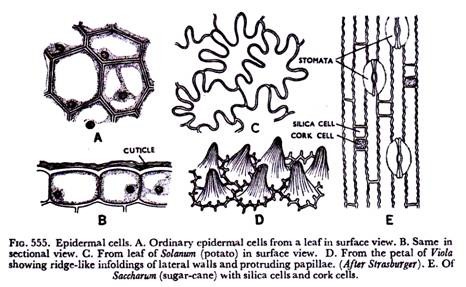
Epidermal cells have unevenly thickened walls, the outer and radial walls being much more thick than the inner walls. In some cases they may be and then massive that the central lumen is nigh obliterated. The walls are strongly cutinised, what is very important for protection confronting mechanical injuries and prevention of loss of h2o.
The fatty substance cutin is found in the wall—in interfibriller and intermicellar spaces of the cellulose and forms the cuticle occurring all over the outer wall of the epidermal cells (Fig. 556 A&B).
Information technology remains as a separate layer and in some cases it may be removed as a whole. The cuticle is often establish to project into the radial walls as peg-similar bodies (Fig. 556C). Cuticle is absent-minded simply in the epidermis of roots and some submerged aquatic plants.
The thickness of the outer walls of the epidermal cells depends on the ecology conditions of the plants. It is quite thin in plants with acceptable h2o supply, and information technology is unordinarily thick in plants growing in dry situations.
The surface of the cuticle may be polish or may possess ridges and cracks. The cutinised portion of the walls, the portion lying beneath the cuticle, has been found to consist of alternate layers of cutin and pectic materials.
Waxy matters are often deposited on the cuticle in form of rods and grarules (Fig. 556E). The so-called 'bloom' of many fruits and glaucous characters of many stems and leaves are due to these deposits. Lignification is rather rare in epidermal cells.
It occurs in the pino needles (Fig. 556D), in cycad, in grass leaves exterior the sclerenchyma patches and in a few dicotyledons. Deposition of silica is common in the epidermal cells of horse-tails (Equisetum) and grasses.
It is actually interesting to find long epidermal cells having corrugated margin (Fig. 555E) associated with ii kinds of short cells—the silica cells and cork cells in grasses. The silica cells contain silicon oxide and cork cells with suberised walls comprise organic materials.
In some dicotyledonous families like Malvaceae, Rutaceae, etc., the epidermal cells individually or in groups undergo gummy changes, particularly in the seeds. Special sac-similar cells remain scattered in the epidermis of some members of family unit Cruciferae.
These are idicblastic cells resembling the lati ciffers, simply they comprise an enzyme, myrosin, and and then they are called myrosin cells. It has been stated in a preceding affiliate that many dicotyledonous families similar Urticaceae, Moraceae, possess cystoliths.
The cystolith-containing cells of epidermis are referred to a lithocysts. The epidermis is often made up of a layer of sclereids, as found in the seed-coats of Pisum and Phaseolus of family unit Leguminosae (Fig. 537D) and in the scales of garlic—Allium sativum of family unit Liliaceae (Fig. 537E).
Radial and inner walls of epidermal cells possess pit-fields. Plasmodesmata have also been reported, those on the outer walls of leaves accept besides been chosen ectodesmata.

The origin of the shoot epidermis may be traced from the apical meristem. Information technology arises from the outer layers-of tunica, according to tunica-corpus theory, or from the dermatogen of Haustein or protoderm, as suggested by Haberlandt, which may exist called primordial epidermis.
Simply the root epidermis fundamentally differs from that of shoot in origin, construction equally well as in office. It has been pointed out in the previous affiliate that epidermis of root is related to the root-cap or the cortex from the developmental point of view.
The cells are tabular, lack in cutinisation of wall and their function is mainly absorption of h2o and solutes. So the terms epiblema, piliferous layer or rhizodermis have been practical to it.
Epidermis, every bit a rule, persists as uniseriate layer throughout its life in the organs where distinct secondary growth does not take place. In some monocotyledons, though secondary increase is absent, a kind of periderm is formed, and thus the epidermis is destroyed.
In organs with singled-out secondary growth in thickness epidermis continues till cork cells are formed. In leaves, flowers and fruits, it persists as long equally the organs practice. In roots the epidermis with a part of cortex becomes dead, lignified or suberised afterwards the root hairs are destroyed.
Bulliform Cells:
In the leaves of monocotyledons, excepting a few families, a peculiar blazon of comparatively larger, highly vacuolate and thin-walled cells occur in the epidermis. These are chosen bulliform (significant, bubble-like) cells.
In transverse section they appear as a fan-like band considering the median cell is usually the largest in size (Figs. 557 & 557A). They may be nowadays on both sides of a leaf, but are more than common on the upper side running parallel to the veins.
They either cover large areas or remain restricted to the grooves. These are mainly water-containing cells with no chlorophyll. The walls are usually thin, merely the outer walls may be thick and cutinised like other epidermal cells, oft filled with silica.
At that place are three views as regards the functions of bulliform cells. According to the first view they are concerned with the unrolling of the developing leaves. It is suggested that these cells undergo sudden and rapid expansion at a certain stage of leafage development and consequently bring about unfolding of the leaves.
The second view is that they accept a function to play in the hygroscopic opening and closing movements of mature leaves, due to changes in turgor. They have also been called motor cells by workers property the above view. The third view is that they are simply concerned with water-storage and have no other function.


Stomata:
The continuity of the epidermis of aeriform organs is interrupted by the presence of some minute pores or openings on it. These pores are chosen the stomata, through which substitution of gases takes place between the internal tissues and the outer atmosphere. A stoma has a small slit or pore and two specialised epidermal cells, called baby-sit cells, on the 2 sides. Often other epidermal cells adjacent to the stoma undergo modifications.
They differ from other epidermal cells and become associated with the stoma functionally. These are referred to equally subsidiary or accompaniment cells (Figs 559 & 561). Though gaseous interchange actually occurs through the pore, called stomatal aperture or opening, the term stoma includes the whole thing, the pore, guard cells and subsidiary cells, when present.
In surface view the guard cells await cresent or kidney-shaped in appearance, existence attached to each other at the margin of the concave side with the aperture lying in betwixt them (Fig. 558A). They may be hands distinguished from ordinary epidermal cells, because they possess dense cytoplasm, prominent nuclei, chloroplasts, and even starch grains.
A cavity is present just beneath the stoma, what is called sub-stomatal chamber or cavity (Fig. 558B). It is in advice with the intercellular space arrangement of the internal tissues.
The walls of the guard cells are unevenly thickened, the wall along the aperture being strongly built and that away from the aperture existence sparse and extensible. The guard cells have cutinised outer walls with a layer of cuticle which extends through the aperture and joins the inner wall.
Due to strong cutinisation often ledges of wall materials are noticed on the upper and lower sides of the ventral wall, so that in exclusive view they appear like horns or beaks. The ledges project above and below and overarch the 2 chambers, referred to as the front cavity and back crenel, which communicate with each other through the pore (Figs. 558B & 560A).

The guard cells, due to uneven thickening of the wall, what is really an outstanding grapheme, can regulate the opening and closing of the stomatal discontinuity. Unremarkably stomata remain open in daytime and shut upward with nightfall.
The opening is influenced by the changes in the turgor of the guard cells. With increment of turgor the thinner walls of the guard cells get stretched and the thicker walls go more concave, thus the gap becomes wide.
In the grass and sedge families the baby-sit cells of the stomata are particularly dumb-bell- shaped where the middle portion is straight and strongly thickened and the two ends are swollen or bulbuous (Fig. 559) and sparse-walled.
Here increment in turgor causes further swelling of the bulbuous ends and, as a result, the directly median portions get separated from each other. Decrease in turgor brings virtually reverse changes. The physiological factors influencing detailed machinery of the opening and endmost of stomatal discontinuity will be taken upward in the portion on found physiology.
Stomata occur in all aeriform parts of the plants, most abundantly in the foliage leaves. Those nowadays on the floral parts and in the aquatic plants are unremarkably functionless. In leaves they may occur on both upper and lower surfaces. In woody plants with dorsiventral leaves they are located on the lower epidermis. In herbaceous plants with isobilateral or centric leaves they occur on both the surfaces. Even in that case stomata are more than arable on the lower side than on the upper.
In floating leaves they occur only on the upper epidermis. In an individual leafage stomata are more numerous well-nigh the apex and minimum virtually the base, the middle portion having a distribution, which is an average of the apex and base. In leaves with parallel venation, equally in the monocotyledons, and the needles of conifers stomata remain arranged in parallel rows (Figs. 555E & 559), whereas in reticulately-veined leaves they lie scattered (Fig. 563).
The number of stomata occurring on the epidermis of leaves is fairly large, which may range betwixt a few thousand to over a hundred thousand per square cm. It has been estimated that a maize plant may have more than two hundred million stomata. And then ane can hardly judge the number in a large tree.

The guard cells may be at the same level with next epidermal cells or they may be placed higher up or prevarication sunken below the surface of the epidermis. Sunken stomata (Fig. 560) are characteristic of the plants of dry situations, where they often appear to be located at the bottom of a loving cup-shaped depression, which is called the external cavity or outer chamber. This is an effective mechanism for reducing transpiration.
The subsidiary cells are highly thickened here. In the leaves of Nerium a groove or low is formed, what is chosen stomatal pit (Fig. 560B) and stomata remain very much sunken.
Stomata raised higher up the surface of epidermis (Fig. 560D) are plant in the peduncle of Cucurbita where they announced
to be placed at the summit of a conical papilla. Stomata also occur on the sporophytes of bryophytes like Anthoceros and mosses.

The stomata of mosses representing really the simplest types, testify departure from other types in the nature of thickening of the wall—ventral walls being thin and dorsal thick (Fig. 561) and in the mechanism of opening and endmost of the aperture.

Ontogeny of the Stomata:
Stomata arise from the protoderm cells. Usually a protoderm cell undergoes anticlinal division, one of them serves every bit the stoma female parent prison cell. It eventually divides into 2 cells leaving a minor slit between them (Fig. 562).
The two cells develop into ii kidney-shaped guard cells and the slit into the stomatal aperture. In many families the protoderm undergoes several divisions before the stoma mother cell differentiates.
Ordinarily subsidiary cells ascend from protoderm cells lying adjacent to the stoma mother cell. They may be sister cells of the mother cell or may arise by division of the cells lying next to the female parent cells. A number of types of stomata have been recognised on the ground of their modes of development, relation with neighbouring cells and occurrence and number of subsidiary cells.
Without going into detail the following types may be cited as common ones:
In Allium, Iris, etc., the protoderm jail cell divides anticlinally into 2 diff cells; the smaller i serves as the stoma mother jail cell which gives rise to the stoma. The subsidiary cells are absent. It is a very common type of stoma.
In Zea, bamboos and other members of grass and sedge families the guard cells are specially dumb-bell-shaped in appearance. Two subsidiary cells arise by segmentation of the protoderm cells lying next to stoma female parent cell and they occur on 2 sides of the guard cells. This is referred to equally Zea type.
In Tradescantia iv subsidiary cells are formed which originate from four protoderm cells surrounding the stoma mother cell. In Bryophyllum the protoderm cells have been institute to produce a series of spirally arranged subsidiary cells, and finally they requite ascent to the guard cells.
The stomata occurring in bryophytes every bit found in the sporophyte of Mnium, are the simplest where wall ledges are absent and, unlike other types, the ventral wall is thin and the dorsal wall thickened. In contempo years intensive investigations have been in progress regarding the mode of development of stomata, their relation to the neighbouring cells and the occurrence of the subsidiary cells.
In fact, these characters have been used in issues of classification and phylogeny. The stomata on the ground of investigations specially in the gymnosperms (Florin and others) have been put into two types: viz., (1) Haplocheilic, where the guard cells originate by a single division of the stomatal initial, and some of the neighbouring cells get modified into subsidiary cells.
(ii) Syndetocheilic type, when the baby-sit cells and subsidiary cells originate from the aforementioned mother jail cell. It was thought that haplocheilic type is more primitive than the syndetocheilic one, simply actual studies on a big number of plants practice not support that contention.
Both the types have been noticed in gymnosperms and many families of angiosperms. In fact, different types have been found in the different genera of the aforementioned family unit, and fifty-fifty in different species of the same genus.
Modern workers (Cf. Metcalfe and Chalk) take suggested the following types of stomata in the dicotyledons on the footing of the characters stated in a higher place.

A. Anomocytic or irregular-celled type (Fig. 563A):
Stoma remains surrounded by a express number of cells which cannot exist distinguished from other epidermal cells. Thus the subsidiary cells are absent. This is as well called ranunculous type, common in the families Ranunculaceae, Capparidaceae and others.
B. Anisocytic or unequal-celled blazon (Fig. 563B):
Hither the stoma remains surrounded by three subsidiary cells of which one is distinctly smaller than the other 2. It is otherwise known as cruciferous type common in Cruciferae.
C. Diacytic or cross-celled type (Fig. 563C):
Here the stoma remain enclosed past a pair of subsidiary cells whose common wall is at right angles to the baby-sit cells. This is too chosen caryophyllaceous type, common in Caryophyllaceae, Acanthaceae and others.
D. Paracytic or parallel- celled type (Fig. 563D):
The stoma is accompanied on either side by i or more subsidiary cells which lie parallel to the long axis of the pore of baby-sit cells. This is likewise referred to as rubiaceous type mutual in Rubiaceae, Magnoliaceae and others.
In view of the fact that diversities occur as regards the nature of the stomata the terms ranunculous, etc., are rather confusing, and anomocytic, etc., suggested by Metcalffe and Chalk appear to be more appropriate.

Some other classification on the basis of development was devised (Pant, 1965), and stomata have been put in iii categories:
(ane) Mesogenous type—guard cells and subsidiary cells derived by consecutive division of a female parent cell, e.g., Rubiaceae, Cruciferae.
(2) Mesoperigenous blazon—where the surrounding cells are of dual origin, some from the mother cell and some from the neighbouring prison cell, e.g, Ranunculaceae, Caryophyllaceae.
(3) Perigenous type—all neighbouring and subsidiary cells having independent origin, eastward.g., Cucurbitaceae, Nympheaceae.
In the monocotyledons the most common one is the graminaceous or grass type (Fig. 559). Here the ii guard cells are impaired-boll-shaped having a narrow middle portion and bulbuous ends. 2 distinct subsidiary cells lie parallel to the long axis of the pore.
In recent years intensive investigations have revealed a few other types as well (Fig. 563A). In Orchidaceae, Amaryllidaceae and others the baby-sit cells are non associated with whatsoever subsidiary cells.
Guard cells surrounded by four to six subsidiary cells take been noticed in many species of Araceae, Commelinaceae, Musaceae and others. In Palmae, Pandaceae baby-sit cells have four subsidiary cells—ii of them are lateral and 2 polar ones.
The latter ones are smaller in size and circular in shape. The term tetracytic has been used for this type.
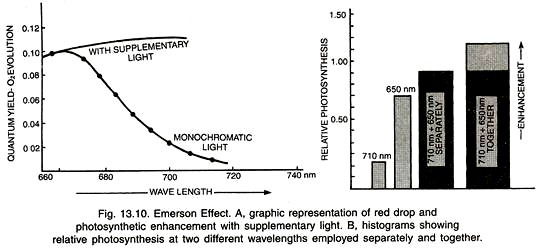
It has been suggested that stomata with many subsidiary cells are archaic, and those with few or no subsidiary cells take been derived by reduction.
The stomata are very important from physiological point of view. Information technology is through them that interchange of gases takes place betwixt the intercellular space arrangement of the internal tissues and the outer atmosphere and thus important physiological functions like photosynthesis, respiration and transpiration become possible.
Water-stomata or hydathodes are too epidermal openings through which liquids often with dissolved salts, are exuded from the plants. They accept been discussed in the preceding affiliate.
Epidermal Outgrowths:
Outgrowths of diverse forms, structures and functions develop from the epidermis. All these appendages which are epidermal in origin, are referred to as trichomes.
Thus they are unlike from the emergences like the prickles of roses, as the latter are formed by epidermis and a part of cortex. Trichomes may occur on all parts of the plant body.
Some of them persist throughout the life of the organs, whereevery bit many of them are ephemeral bodies. They may remain alive or become dead and continue as such. Trichomes have been put into a number of groups on the footing of their morphological characters.
(a) Hairs:
Hairs constitute a very mutual type of trichome. They may be unicellular or multicellular. Unicellular hairs are frequently simple unbranched elongated bodies or they may be branched.
Some of them are very much elongated and twisted, and so that they take woolly advent (Fig. 564-C). Multicellular hairs may exist formed of 1 row of cells (Fig. 564 A, D, E & F) or of many layers equally found in the base of petiole of Portulaca.
Frequently these hairs branch in very peculiar fashions; some of them assume dendroid or tree-similar appearance (Fig. 564 G & H), or the branches come out in one plane giving it stellate or star-like shape.
They are also called stellate hairs (Fig. 564 I), A multicellular hair has usually two parts, the basal function which remains embedded in the epidermis is the human foot and the other which projects out is the body. An initial prison cell divides periclinally into ii parts, of which the outer one forms the body and the inner one, the foot.
(b) Scales or Peltate hairs:
These hairs consist of disc-like plate of prison cell (Fig. 564 J) put on a short stalk or directly attached to the foot.

(c) Colleters:
These are glandular trichomes. Some hairs accept multicellular stalk and head, the latter is composed of glandular cells (Fig. 565). Sticky exudations present on the surface of certain leaves and buds are secreted by colleters.
Salt-secreting glands as found in Tamaricaceae and calcium- secreting glands of Plumbaginaceae are really interesting (Fig. 565A).
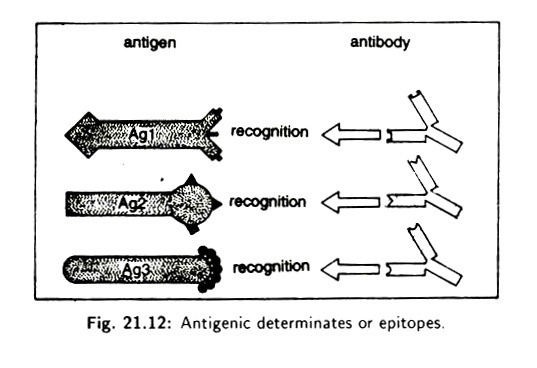
(d) Water vesicles or bladders:
They class a very interesting blazon of trichome where some epidermal cells get greatly distended and serve every bit water reservoir.
They occur in
the so-chosen 'ice-plant' (Mesembryanthemum crystallinum of family Aizoaceae) where the surface of the leaves and young stems appear to be covered by water ice-chaplet (Fig. 566).
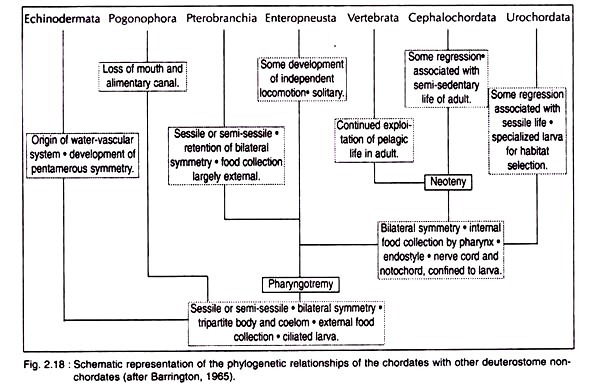
Those occurring in Artiplex, besides called vesiculate hairs, dry upward with maturity and persist equally a white layer on the leaf surface (Fig. 565A).
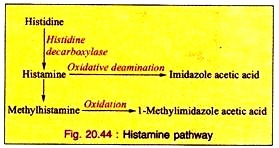
The walls of trichomes are normally of cellulose covered by cuticle. They sometimes remain impregnated with silica and calcium carbonate. Trichomes other than glandular ones have highly vacuolated protoplast. The cotton fibres, which are really hairy outgrowths from the seeds, have secondary walls of nigh pure cellulose. The stinging hairs of nettle (Urtica dioica) possess a peculiar blazon of wall structure for releasing the contents of the gland.
The hair (Fig. 244) resembles of fine capillary tube with silicified upper cease and calcified lower stop. The base remains embedded in the epidermal cells. Coming in contact with the pare the tip breaks at a predetermined signal and the sharp edge penetrates into the peel when the contents (histamine and acetycholine) are injected, so to say, to the wound.
Root-hairs:
As already reported the root epidermis fundamentally differs from shoot epidermis in origin and in absence of cuticle and stomata. But it bears hairs at a particular zone. Different the hairs and trichomes discussed higher up, the root-hairs are not outgrowths or appendages, but they are prolongations of the epidermal cells. During the formation of root-hairs, growth in length of the epidermal cells is checked.
It has been found in some plants that root epidermis possesses two types of cells, short cells and long cells due to unequal sectionalisation, and the hairs are formed from the short ones (Fig. 567) which are called trichoblasts.
It comes out as a protuberance, continues elongation and thus the hair is formed. It has vacuolate protoplast and the nucleus moves on to the tip. The wall is thin, composed of cellulose and pectic materials. Root-hairs are short-lived bodies.
During the growth of the root, old hairs are destroyed and replaced by new ones. They are responsible for the absorption of water and mineral solutes from the soil.
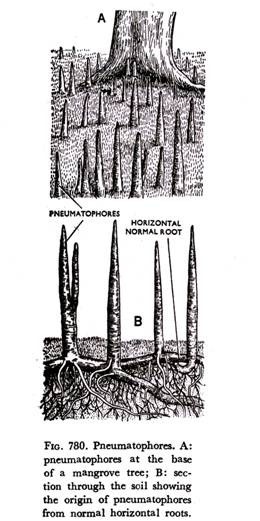
Source: https://www.biologydiscussion.com/plant-tissues/the-epidermal-tissue-system-of-plants-with-diagrams/13880
Posted by: gravescolmilluke.blogspot.com

0 Response to "In Which Tissue System Of Plants Would You Expect To Find The Guard Cells?"
Post a Comment